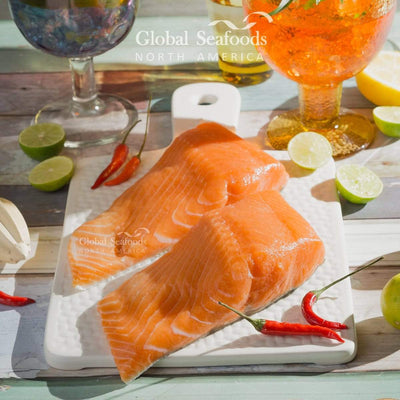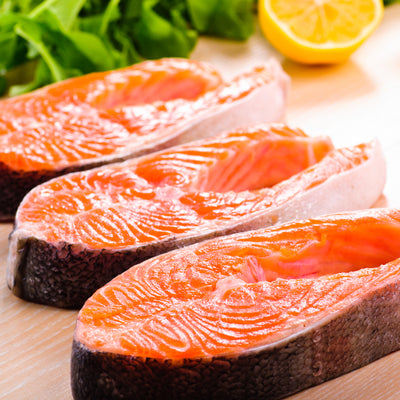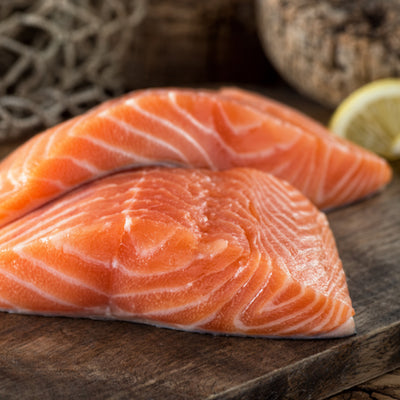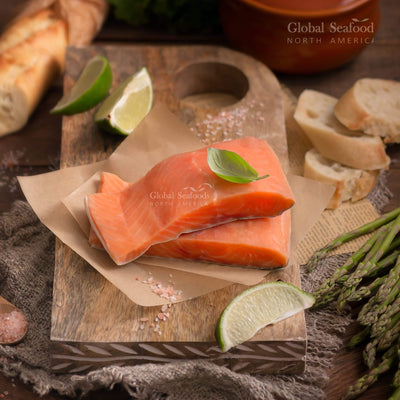+Shop Now
+Categories
- Abalone
- Ahi Tuna
- Alaskan King Crab Legs
- Alaskan Pollock
- Alaskan Sockeye Salmon
- Albacore Tuna
- Anchovy
- Anxiety Relief
- appetizer
- Atlantic Salmon
- Beluga Caviar
- Best Sushi
- black caviar
- black cod
- Blue crabs
- Bluefin Tuna
- Brain Function
- Branzino
- breakfast
- Calamari
- caviar
- Caviar Recipes
- Chef Knives
- Chilean Sea Bass
- Clams
- cocktail caviar
- Cod
- Coho Salmon Caviar
- collagen
- Cooking Methods
- crab
- Crab Balls
- Crab Cakes
- Crab claws
- crab meat
- Crab Recipes
- culinary tips
- decline-sturgeon
- Diver Scallops
- Dover Sole
- Dry Aged Fish
- Dungeness Crab
- Dungeness crab clusters
- Dungeness Crab Legs
- Exotic Shellfish Sampler
- Fish and Seafood
- fish oil
- Fish Sauce
- flat fish
- FLOUNDER FISH
- Focus
- Fresh Seafood Delivery
- Fresh Wild Alaskan Salmon
- Geoduck
- Gooseneck Barnacles
- Gourmet Seafood Platter
- haddock
- halibut
- Halibut Recipes
- hamachi
- Hamachi Recipe
- health
- healthy eating
- Ikura
- Japanese restaurants
- Jonah crab
- Jumbo Sea Scallops
- Kaluga Caviar
- kelp
- king crab
- King Crab Legs
- King Salmon
- kitchen
- Lingcod
- Live King Crab
- Live Lobsters for Sale
- Live Scallops
- Live seafood
- lobster
- Lobster Tail
- luxury food
- mahi mahi
- Marine Collagen
- Mollusk
- Monkfish
- Mussels
- New
- Nutrition
- octopus
- Opah
- Ora King Salmon
- Osetra Caviar
- Ossetra Sturgeon Caviar
- oysters
- Pacific Cod
- Pacific Hake
- Pacific Halibut
- Pacific Ocean
- Pacific Whiting
- Pacific Whiting Recipe
- Paddlefish Caviar
- Petite Oysters
- Petrale Sole
- Poke Tuna
- Pollock
- Pregnancy
- Premium Caviar Selection
- Recipe
- red caviar
- Red Crab
- rock fish
- Rockfish
- Rockfish Recipes
- sablefish
- Sablefish (Black Cod) Recipes
- salmon
- Salmon Caviar
- Salmon lox
- Salmon Poke
- Salmon Recipes
- salmon roe
- Sardines
- Sashimi
- Sashimi-Grade Tuna
- Scallop
- scallops
- Scallops Recipe
- Sea Urchi Recipe
- sea urchin
- Sea Urchin Sushi
- sea weed
- Seafood
- Seafood Dishes
- Seafood Market
- Seafood Recipe
- Seafood Restaurants
- sevruga caviar
- shellfish
- Shrimps & Prawns
- Silver Salmon
- Smoked
- Smoked Salmon
- Smoked Tuna
- Snail Caviar
- Snapper Recipe
- snow crab
- Sole & Flounder Recipes
- Squid
- Steelhead
- Sturgeon Caviar
- Sustainable Seafood Choices
- Swordfish
- Tilapia
- Tilapia Fish
- Tobiko
- Trout
- tuna
- Tuna Recipe
- weathervane scallops
- white fish
- White Sturgeon
- White Sturgeon Caviar
- Whiting Fish
- Wild Caught Shrimp
- Yellowfin Tuna
- Yellowtail snapper
Unveiling the Beautiful Shades of Cooked Salmon Color: A Visual Feast
June 01, 2023

The Perfectly Cooked Salmon Color: A Visual Treat for Food Enthusiasts
Introduction:
Cooked salmon is not only renowned for its exquisite taste but also for its visually stunning color. In this blog post, we will delve into the captivating world of the cooked salmon color. From the science behind its hue to the cultural significance it holds, we will explore the various aspects that make this dish a feast for the eyes and the palate.
Understanding the Cooked Salmon Color:
The cooked salmon color is a beautiful blend of vibrant pinks, oranges, and reds. This hue is a result of various factors, including the fish's diet and the cooking method employed. The presence of natural pigments, such as astaxanthin, contributes to the distinct coloration of the flesh.
The Science Behind the Color:
Astaxanthin, a carotenoid pigment, is responsible for the cooked salmon's eye-catching color. This antioxidant is obtained from the salmon's diet, consisting mainly of shrimp and krill. The accumulation of astaxanthin in the fish's flesh gives it a rich and appealing hue. Moreover, the cooking process enhances the visual allure, turning the fish into a work of art on the plate.
Cultural Significance:
The cooked salmon color holds cultural significance in various cuisines around the world. In Japanese cuisine, for example, the vibrant shade symbolizes luck, happiness, and prosperity. In Nordic countries, it represents the abundant marine life and is considered a culinary treasure.
Enhancing the Visual Appeal:
Apart from its natural color, presentation plays a vital role in enhancing the visual appeal of cooked salmon. Skillful garnishing with colorful ingredients, such as fresh herbs, citrus slices, or edible flowers, can elevate the dish to new heights. This artistic touch not only adds visual interest but also complements the flavors of the salmon.
FAQs:
Q1: Is the cooked salmon color indicative of its freshness?
A1: While color can be an indication of freshness, it is not the sole determinant. Factors like odor, texture, and storage conditions should also be considered to ensure the salmon's quality.
Q2: Can the cooked salmon color vary between different species?
A2: Yes, the cooked salmon color can vary depending on the species. For example, sockeye salmon typically exhibits a vibrant reddish color, while coho salmon tends to be more orange.
Q3: Can the cooking method affect the cooked salmon color?
A3: Yes, the cooking method can influence the color of cooked salmon. Grilling and broiling can result in more charred, browned areas, while poaching or steaming may preserve a brighter hue.
Conclusion:
The cooked salmon color is not only visually captivating but also a testament to the culinary expertise and cultural traditions associated with this delectable fish. From its origins in nature to the intricate art of presentation, every aspect of cooked salmon contributes to its undeniable allure. So, next time you savor a plate of perfectly cooked salmon, take a moment to appreciate the magnificent color that adds an extra layer of delight to your dining experience.
Buy Fresh, Premium Salmon Online
Looking for the freshest, high-quality salmon delivered straight to your door? Whether you prefer the rich, buttery texture of King Salmon, the lean and flavorful Sockeye Salmon, or the versatile Coho Salmon, we have the perfect selection for you. Enjoy premium wild-caught salmon that's perfect for grilling, baking, or pan-searing. Click below to explore our top choices and elevate your seafood experience today!
🔗 Shop Now:
🐟 Sockeye Salmon Fillets – Wild-caught, deep red color, and rich in flavor.
🐟 King Salmon – Buttery, high in omega-3s, and incredibly tender.
🐟 Coho Salmon Fillet Portions – Mild, slightly sweet, and great for any dish.
🐟 Salmon Belly Strips – Perfect for grilling and full of rich flavor.
🐟 Chum Salmon – A budget-friendly, mild-flavored option.
🐟 Copper River King Salmon – A delicacy with a bold, luxurious taste.
🐟 Silver Salmon – Lean, firm texture, and a great choice for any recipe.
📢 Watch expert seafood recipes and cooking tips on the Global Seafoods YouTube Channel!
Related Products
Share:
Also in News

How to Make Sea Bream Sushi With Dry-Aged Tuna & Crab Roll — Step-by-Step With Chef Joshua
December 07, 2025
A complete guide to making Sea Bream sushi at home, including filleting, curing, slicing, and building a Dry-Aged Tuna & Crab sushi roll. Chef Joshua shares professional tips for restaurant-quality results.

The Boiled Crab in Popular Culture: From Cajun Cuisine to Trendsetting Restaurant Phenomenon
June 27, 2025
From spicy Cajun-inspired seafood boils to hands-on dining experiences, The Boiled Crab has left a unique mark on popular culture. Discover its cultural roots and culinary influence.

Boiled Crab for Game Night: Everything You Need for a Perfect Seafood Party
June 27, 2025
Take your game night to the next level with a Boiled crab party. Learn the best recipes, cooking tips, and hosting hacks for a memorable seafood feast.
+Shop Now
+Categories
- Abalone
- Ahi Tuna
- Alaskan King Crab Legs
- Alaskan Pollock
- Alaskan Sockeye Salmon
- Albacore Tuna
- Anchovy
- Anxiety Relief
- appetizer
- Atlantic Salmon
- Beluga Caviar
- Best Sushi
- black caviar
- black cod
- Blue crabs
- Bluefin Tuna
- Brain Function
- Branzino
- breakfast
- Calamari
- caviar
- Caviar Recipes
- Chef Knives
- Chilean Sea Bass
- Clams
- cocktail caviar
- Cod
- Coho Salmon Caviar
- collagen
- Cooking Methods
- crab
- Crab Balls
- Crab Cakes
- Crab claws
- crab meat
- Crab Recipes
- culinary tips
- decline-sturgeon
- Diver Scallops
- Dover Sole
- Dry Aged Fish
- Dungeness Crab
- Dungeness crab clusters
- Dungeness Crab Legs
- Exotic Shellfish Sampler
- Fish and Seafood
- fish oil
- Fish Sauce
- flat fish
- FLOUNDER FISH
- Focus
- Fresh Seafood Delivery
- Fresh Wild Alaskan Salmon
- Geoduck
- Gooseneck Barnacles
- Gourmet Seafood Platter
- haddock
- halibut
- Halibut Recipes
- hamachi
- Hamachi Recipe
- health
- healthy eating
- Ikura
- Japanese restaurants
- Jonah crab
- Jumbo Sea Scallops
- Kaluga Caviar
- kelp
- king crab
- King Crab Legs
- King Salmon
- kitchen
- Lingcod
- Live King Crab
- Live Lobsters for Sale
- Live Scallops
- Live seafood
- lobster
- Lobster Tail
- luxury food
- mahi mahi
- Marine Collagen
- Mollusk
- Monkfish
- Mussels
- New
- Nutrition
- octopus
- Opah
- Ora King Salmon
- Osetra Caviar
- Ossetra Sturgeon Caviar
- oysters
- Pacific Cod
- Pacific Hake
- Pacific Halibut
- Pacific Ocean
- Pacific Whiting
- Pacific Whiting Recipe
- Paddlefish Caviar
- Petite Oysters
- Petrale Sole
- Poke Tuna
- Pollock
- Pregnancy
- Premium Caviar Selection
- Recipe
- red caviar
- Red Crab
- rock fish
- Rockfish
- Rockfish Recipes
- sablefish
- Sablefish (Black Cod) Recipes
- salmon
- Salmon Caviar
- Salmon lox
- Salmon Poke
- Salmon Recipes
- salmon roe
- Sardines
- Sashimi
- Sashimi-Grade Tuna
- Scallop
- scallops
- Scallops Recipe
- Sea Urchi Recipe
- sea urchin
- Sea Urchin Sushi
- sea weed
- Seafood
- Seafood Dishes
- Seafood Market
- Seafood Recipe
- Seafood Restaurants
- sevruga caviar
- shellfish
- Shrimps & Prawns
- Silver Salmon
- Smoked
- Smoked Salmon
- Smoked Tuna
- Snail Caviar
- Snapper Recipe
- snow crab
- Sole & Flounder Recipes
- Squid
- Steelhead
- Sturgeon Caviar
- Sustainable Seafood Choices
- Swordfish
- Tilapia
- Tilapia Fish
- Tobiko
- Trout
- tuna
- Tuna Recipe
- weathervane scallops
- white fish
- White Sturgeon
- White Sturgeon Caviar
- Whiting Fish
- Wild Caught Shrimp
- Yellowfin Tuna
- Yellowtail snapper
Shop Now
Main
News & Updates
Sign up to get the latest on sales, new releases and more…
© 2025 Global Seafoods North America.








